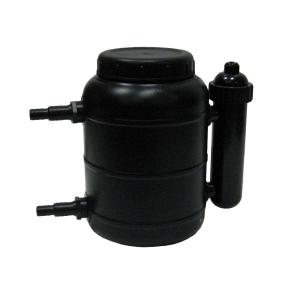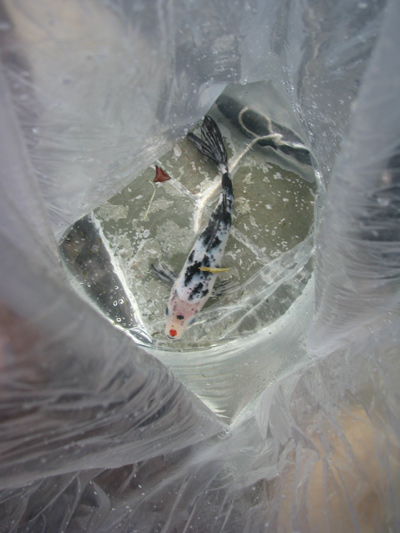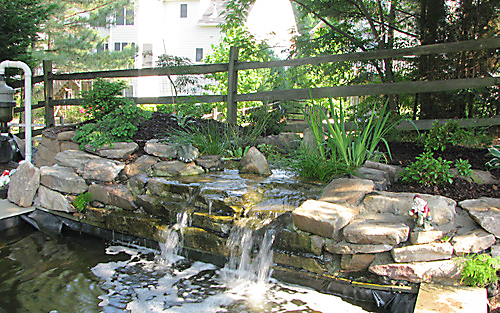I am experiencing severely high Nitrite and Nitrate level in my pond. So rather than continuing to purchase large amounts of corrective chemicals I decided to do some research. Here is what I learned.
Chlorine and Chloramines
In a new pond system filled with tap water you must eliminate the chlorine which can kill your fish, plants, and the bacteria needed to maintain healthy water. This is often done with sodium thisulfate or water conditioners designed to bond with chlorine.
Ammonia
Ammonia is produced by decaying leaves, dying algae, fish waste, and fertilizers in your pond. These too can be neutralized with simple pond additives that likely came with the Chlorine water treatment. Ammonia readings of Zero is easy to achieve.
Nitrites and Nitrates
When Ammonia is broken down by bacteria it releases the nitrogen atoms to produce Nitrites which eventually get eaten by nitrifying bacteria which turn it into Nitrates. Nitrates then become plant food, causing an algae bloom or a plant bloom if you have plants to absorb the Nitrates. The Nitrates are used as food by the plant which produces oxygen. This cycle can lead to spikes and drops depending on the amount of bacteria and other factors.
Nitrites are bad for your fish but do not require immediate reduction. You can add salt to the water to reduce fish stress. Salt reduces the fishes ability to absorb the Nitrites. Doing water changes also helps but may kick off another round of ammonia and chlorine issues destroying what ever nitrifying bacteria you have. Overall it takes the right blend of temperature, PH, food, and time for a pond to establish the Nitrification cycle. Patience is only real remedy. Age of water in a closed system can eventually lead to clear water.
Nitrification Bacteria Notes:
Nitrosomonas (ammonia-oxidizers) and Nitrobacter (nitrite-oxidizers) are the bacterias for freshwater.
Nitrobacters are slow to develop – Ammonia destroying bacteria will occur first so you may see no ammonia but high nitrite because the ammonia has been converted.
The temperature for optimum growth of nitrifying bacteria is between 77-86° F (25-30° C). Nitrifying bacteria will die at 32° F (0° C) or 120° F (49° C).
So spring fluctuating temperatures may have an impact on those bacteria close to the surface. Warmer weather will help. This is also the temperature where fish have better health and immune response.
Nitrifying bacteria reproduce by binary division and can double in 15-20 Hours. Which is slow compared to other bacteria.
Ammonia oxidizers grow best in PH range between 7.8-8.0, while Nitrite oxydizers have an optimum range between 7.3-7.5. Low PH runs risk of higher Ammonia levels.
They need oxygen. Maximum nitrification rates will exist if dissolved oxygen (DO) levels exceed 80% saturation. Adding an air pump is a good method to increase oxygen.
All species of nitrifying bacteria require a number of micronutrients. Most important among these is the need for phosphorus for ATP (Adenosine Tri-Phosphate) production. So that Algae killing solution I added also took away the phosphates need for niter life.
You can add starting Nitrifying bacteria to your pond if there is no Chlorine present. Microbe-Lift PL is the one I am trying. It is a nice rose color but smells like raw sewage. The winter version of it stinks even more.
is the one I am trying. It is a nice rose color but smells like raw sewage. The winter version of it stinks even more.





